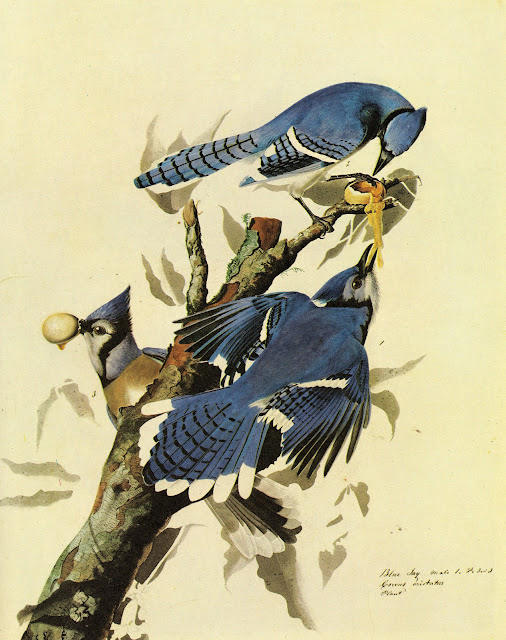
The greatest figure in bird illustration -as per University of Glasgow description- after JJ Audubon was John Gould (1804 – 1881); an English ornithologist that published a huge number of monographs on birds illustrated by plates, produced with the assistance of his wife, Elizabeth Gould, and several other artists including Edward Lear, Henry Constantine Richter, Joseph Wolf and William Matthew Hart.
When Charles Darwin presented his mammal and bird specimens collected during the second voyage of HMS Beagle to the Geological Society of London at their meeting on 4 January 1837, the bird specimens were given to Gould for identification. He set aside his paying work and at the next meeting on 10 January reported that birds from the Galapagos Islands which Darwin had thought were blackbirds, "gross-bills" and finches were in fact "a series of ground Finches which are so peculiar" as to form "an entirely new group, containing 12 species." This story made the newspapers.

Travels & Other works
- In 1838 the Goulds sailed to Australia, intending to study the birds of that country and be the first to produce a major work on the subject. They took with them the collector John Gilbert. The result of the trip was The Birds of Australia (I DO recommend this link from Glasgow University Library special collections department). It included a total of 600 plates in seven volumes, 328 of which were new to science and named by Gould. He also published A Monograph of the Macropodidae, or Family of Kangaroos (1841–1842) and the three volume work The Mammals of Australia (1849–1861).
- In 1830 a collection of birds arrived from the Himalayas, many not previously described. Gould published these birds in "A Century of Birds" from the Himalaya Mountains (1830–1832). The text was by Nicholas Aylward Vigors and the illustrations were lithographed by Gould's wife Elizabeth, daughter of Nicholas Coxen, of Kent.
Most amazing anecdote on his BIO -at least in my opinion-: Gould had a strong interest in hummingbirds. He accumulated a collection of 320 species, which he exhibited at the Great Exhibition of 1851. But he had never seen a live hummingbird, even when he actively tried

List of publications
"The birds of Asia"; 1850-83 7 vols. 530 plates, Artists: J. Gould, H. C. Richter, W. Hart and J. Wolf; Lithographers: H. C. Richter and W. Hart; Parts 33-55 completed after Gould's death by R. Bowdler Sharpe; Vol VI :Artist and lithographer: W. Hart
"The birds of Australia"; 1840-48. 7 vols. 600 plates; Artists: J. Gould and E. Gould; Lithographer: E. Gould. There is a later Supplement published in 1851. 1 vol. 81 plates; Artists: J. Gould and H. C. Richter; Lithographer: H. C. Richter
"The Birds of Great Britain"; 1862-73. 5 vols. 367 plates; Artists: J. Gould, J. Wolf, H.C. Richter and W. Hart; Lithographers: H. C. Richter and W. Hart
"Birds of Europe"; 1832–37. 5 vols. Drawn from nature & on stone by J. & E. Gould. Printed by Hullmandel.
"The birds of New Guinea and the adjacent Papuan Islands, including many new species recently discovered in Australia"; 1875-88. 5 vols. 300 plates; Parts 13-25 completed after Gould's death by R. Bowdler Sharpe; Artists: J. Gould and W. Hart; Lithographer: W. Hart
"A monograph of the Odontophorinae", or partridges of America; 1844-50 1 vol. 32 plates; Artists: J. Gould and H. C. Richter; Lithographer: H. C. Richter
"A monograph of the Ramphastidae", or family of toucans; 1833-35. 1 vol. 34 plates; Artists: J. Gould, E. Gould, E. Lear and G. Scharf; Lithographers: E. Gould and E. Lear;
"A monograph of the Trochilidae", or family of humming-birds Supplement, completed after Gould's death by R. Bowdler Sharpe; 1880-87. 5 parts. 58 plates; Artists: J. Gould and W. Hart; Lithographer: W. Hart
"A synopsis of the birds of Australia", and the adjacent islands; 1837-38 1 vol. 73 plates; Artist and lithographer: E. Gould






